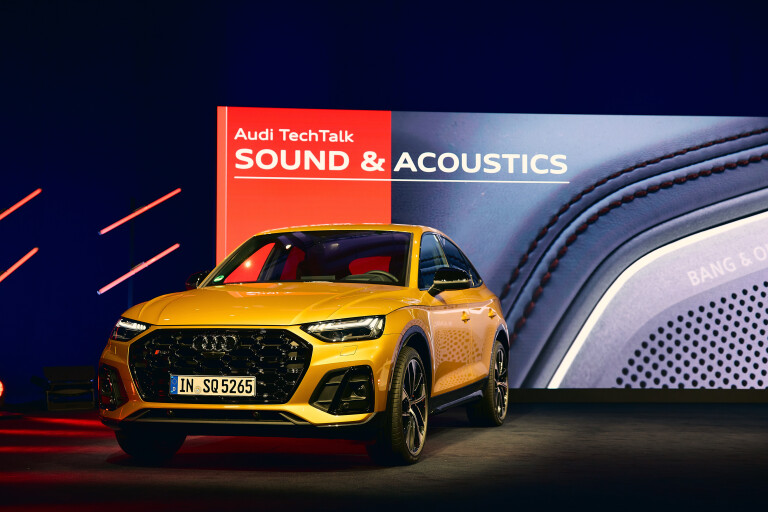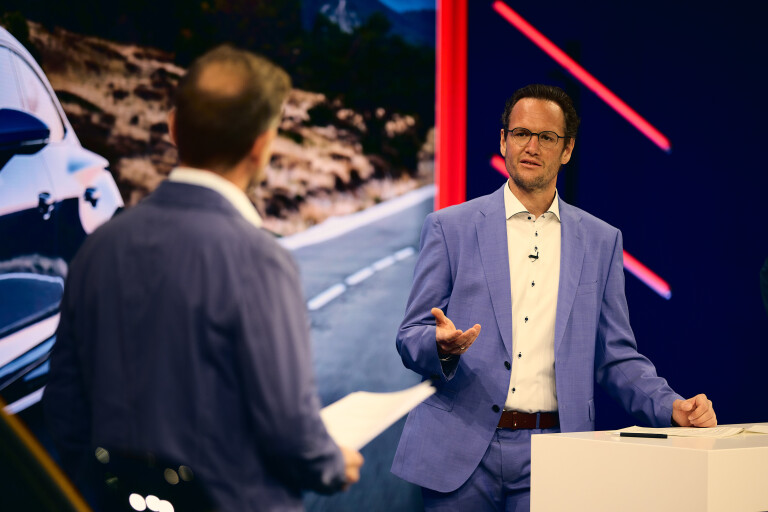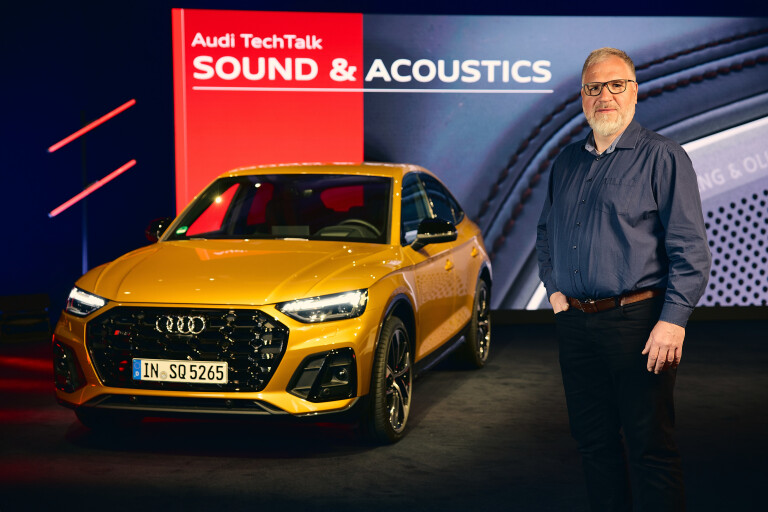
Talking points
- 5G sim cards will improve sound quality
- Experts working on object-oriented 3D sound
- Sonos speakers being rolled out across compact A and Q range this year
- EVs pose new challenges for sound development
‘Audi-ophiles’ will be transported from the driver’s seat to a concert hall possibly as early as 2024/25 – the date by which the German automaker plans to have high-speed 5G sim cards built into its cars capable of vastly improving sound quality.
At an Audi Tech Talk on Tuesday, the manufacturer revealed the next big thing it is working on in the sound and acoustics world is implementing 5G across its range.
While most people currently use their smartphones to listen to music or podcasts in the car because it is convenient, the bandwidth of Bluetooth wireless technology is limited and creates a bottleneck that can cause a loss of sound quality.
Audi claims that in the near future, for the first time, it will use its cars as receivers – via the built-in SIM card and a high-performance receiver module – to open up new, higher-quality streaming channels.
Dr Tobias Gründl, who joined Audi as Head of Development for Sound and Acoustics in 2019, says: “Audi is a leader in creating a unique, three-dimensional stereophonic experience – to that end, an extremely wide range of technologies will be used in the future.

“Software gives us a lot of new possibilities for sound presentation because the hardware is already there. In the future, the interior will become more and more like a concert hall and the passengers will be sitting in the middle of it.”
The quality of sound in cars has come a long way in the past few decades.
Back in 1989, in the age of stacked out amps and speakers, the Audi 200 was the first to have Bose speakers, and many years later in 2006, the Audi A8 teamed up with another luxury brand for the first time – Bang and Olufsen.
The new partnership for 2021 though is with high-end brand, Sonos. Recently revealed as the music system fitted in the new Q4 E-Tron, it will also be rolled out across Audi’s other compact A and Q models mid-year, offering a youthful and more bass-heavy sound, while Bang and Olufsen remain the system of choice for Audi’s mid and full-size models from A4 upwards.
Speaking about the partnership, Audi says: “Sonos’s authentic, energetic sound fits perfectly with our sound philosophy and our compact models. The new Q4 E-Tron is Audi’s entry point into the premium world of electric vehicles.
“It is increasingly aimed at younger generations and young families. And those customers know Sonos from home. Now, for the first time, we’re bringing Sonos where people like listening to music most.
“At the start of our collaboration, we are presenting a few exciting new features: for the first time, people can use familiar sound settings to make tonal changes in the timbre that will make the interior more emotional. The back seat can have more bass and be filled with louder sound while the driver and front-seat passenger can listen at half the volume and a more neutral balance so they can concentrate more on traffic – or spare their nerves.”

The premium car brand is also continuing to improve its sound and acoustics in other ways, working on what it calls an “immersive 3D sound” which will create a more “holistic experience”, as well as tackling the challenges posed by the differences between internal combustion engine and electric-powered vehicles.
“The Audi sound is distinctive. The challenge for us has been to create this sound pattern in every vehicle segment with their different kinds of spaciousness. Whether they get into an A1 or an A8, it always sounds uniquely like an Audi,” adds Dr Gründl.
Since the current Q7 model generation was introduced in 2016, Audi has offered Bang and Olufsen systems with conventional 3D surround sound using a channel-oriented playback. What the German carmaker is now working on is an immersive 3D sound which is object-oriented.
Using this approach, the sounds in the audio files are already linked with metadata which contain precise information on how and where the corresponding sound should be heard in the car in an attempt to reflect how it was recorded.
According to Audi, however, we won’t be able to properly enjoy the full experience until its cars are driving themselves because we’ll be too busy…well, driving.

COMMENTS